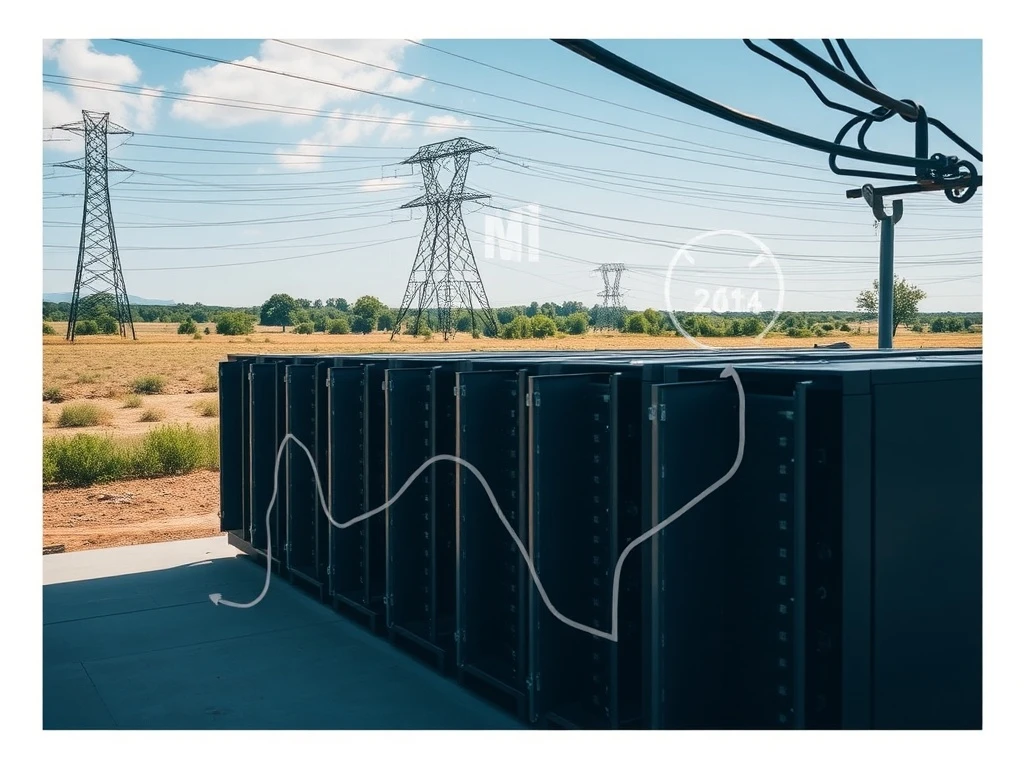Bitcoin Mining Production Sees Sharp Decline in June Amidst Texas Energy Challenges

The world of cryptocurrency mining is constantly evolving, facing unique challenges that impact production. In June, several major players in the Bitcoin mining space reported a notable dip in their output. This wasn’t just a random fluctuation; it was largely a strategic move linked to energy costs and environmental factors, particularly in key mining regions like Texas. Understanding this trend is crucial for anyone following the Bitcoin mining industry.
Why Did Bitcoin Mining Production Fall in June?
Several leading Bitcoin mining firms saw reduced production figures last month. This decline was primarily attributed to two main factors:
- Strategic power curtailment to manage costs during peak demand periods.
- Weather-related disruptions impacting facility uptime.
Companies operating in Texas, a major hub for U.S. Bitcoin mining, were particularly affected by the Electric Reliability Council of Texas’s (ERCOT) energy programs and rising temperatures.
Navigating Texas Energy Costs Through Power Curtailment
A significant driver behind the lower June production was the deliberate choice by miners to curtail operations. This practice, known as economic curtailment, involves shutting down mining rigs during times when electricity prices are prohibitively high. In Texas, June marks the beginning of ERCOT’s Four Coincident Peak (4CP) program. This tariff charges large energy consumers, including Bitcoin miners, based on their electricity usage during the grid’s four highest demand periods across the summer months (June-September).
By voluntarily reducing consumption during these critical peak times, miners can significantly lower their transmission charges, even if it means sacrificing short-term miner production. This strategy enhances grid stability and helps miners maintain competitive power costs in the long run.
How Specific Miners Handled June Production
Let’s look at how some key companies reported their June figures and the reasons behind them:
Riot Platforms:
- Produced 450 BTC in June, a 12% decrease from May (514 BTC).
- Cited economic curtailment and participation in ERCOT demand response programs as key reasons.
- Emphasized that this power strategy contributes to grid stability and strengthens Riot’s market position.
- Sold 397 BTC for $41.7 million and holds 19,273 BTC.
Cipher Mining:
- Produced 160 BTC in June.
- Reported that production was impacted by proactive 4CP avoidance strategy.
- Stated this approach helped avoid costly penalties and maintain low power costs.
- Holds 1,063 BTC after selling 58 BTC.
- New facilities started contributing late in the month, but overall June production was reduced by curtailment.
MARA Holdings:
- Reported a 25% reduction in production, mining 211 BTC compared to 282 in May.
- Blamed the decline on reduced uptime from weather-related curtailment and temporary deployment of older machines due to storm damage at a Texas facility.
- Also mentioned natural variability in ‘block luck’ as a contributing factor.
- Holds 49,940 BTC, with no sales in June.
CleanSpark:
- Bucked the trend, increasing production by 6.7%.
- Produced 445 BTC in June.
- Surpassed its mid-year hashrate target.
- Holds 6,591 BTC after selling only 8 BTC.
The Strategic Importance of Managing Texas Energy
These June production reports highlight the growing sophistication of Bitcoin miners in managing energy costs. While lower monthly output might seem negative, the savings from avoiding peak demand charges can often outweigh the lost revenue from mining fewer coins in the short term. This strategic approach to Texas energy markets is becoming a standard practice for large-scale miners in the region.
What Does This Mean for Miner Production Going Forward?
As summer progresses, particularly in Texas, we can expect power curtailment to remain a factor influencing miner production figures in July, August, and September. Companies with flexible operations and strong relationships with energy providers are better positioned to navigate these challenges. While weather remains an unpredictable variable, the strategic management of power costs through programs like ERCOT’s 4CP is a deliberate choice shaping the industry’s output month-to-month.
In summary, the dip in Bitcoin miner production in June wasn’t a sign of weakness for most, but rather a calculated move to optimize profitability by strategically managing energy consumption during peak demand periods, particularly within the challenging Texas energy landscape. While some companies faced weather-related setbacks, others like CleanSpark demonstrated continued growth, showing the varied experiences within the sector. Understanding these dynamics is key to interpreting monthly miner reports and the broader trends in the Bitcoin mining world.









